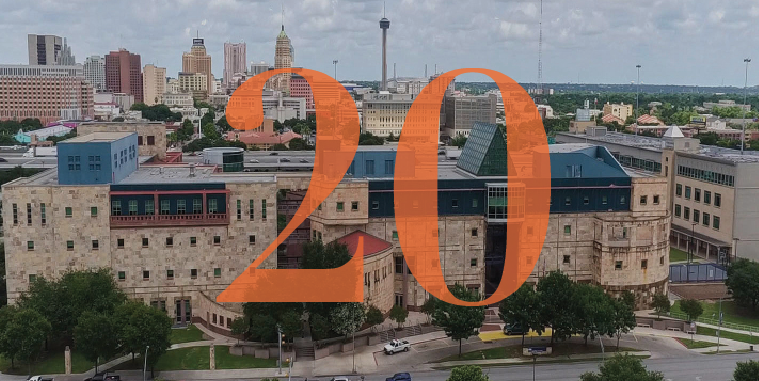On Nov. 13, UTSA celebrated the Downtown Campus 20th Anniversary by honoring its past, reimagining its future and exploring opportunities to advance and grow into an urban-serving university through a series of presentations, panel discussions and a party on the Plaza catered by Bill Miller’s Bar-b-q followed by a firework finale.
President Eighmy began the event by sharing his vision for the future of the Downtown Campus and recognizing some of the many speakers that attended the event such as San Antonio Mayor, Ron Nirenberg, Texas State Senator, José Menédez, San Antonio City Manager, Sheryl Sculley and former Mayor of San Antonio and former Secretary of Housing and Urban Development, Julián Castro.
“Now is the time to ask where this campus and where this university is going,” said Eighmy. “I can’t help but ponder the conversations that took place about the bid to get amazon here in the city. What I would like to promise the community is that we are not going to sit idly. We’re going to work towards greatness as a university and we are going to rise to the occasion and be responsive so that our city can compete for those kinds of things. The Downtown Campus is actually incredibly integral to all of this.”
Eighmy highlighted the successes and purposes of the institutes that the Downtown Campus houses, but focused on what could make the campus better for years to come.
“If you think for the next 20 years, the question becomes: what else does this city deserve to have here at the Downtown Campus? What else is required to make this a vital, spectacular, residential, vibrant Downtown Campus with interdisciplinary, transdisciplinary schools and institutes that haven’t been imagined yet that actually address the grand challenges of our city?”
Eighmy’s answer is to dream big and borrow ideas from other great universities that are innovative and untraditional such as the Downtown Phoenix campus at Arizona State University which has experienced great changes since 2005.
“It’s a very vibrant downtown campus, completely autonomous,” said Eighmy. “The campus now has 11,500 students, 18 acres, 19 buildings, three million square feet going to four million and they’re going to try to get 15K enrollment in the near-term.
“It’s a residential campus with all the amenities students want. There is a light-rail to other campuses in the system, bus loops, a recreational center and it’s all mixed-use and spread over a large footprint.
“There are a variety of schools and colleges, such as, the journalism and mass communication college, the college of law, the teacher’s college, the honors college, the university college and the graduate education program. They’ve established transdisciplinary colleges that merge disciplines that don’t normally talk to each other to work on grand challenges that are germane to Phoenix and Arizona.
“That’s what the future of an urban-serving university is. It’s not the traditional disciplines, it’s the creation of new disciplines that are specifically focused on bringing intellectual talent and capacity to directly address the issues that are a concern to the city and region.”
At the time that Arizona State University made these changes, it was viewed as very disruptive in the higher education community, but the University has prospered since, according to Eighmy. He believes that this model is a perfectly good one for UTSA’s Downtown Campus because San Antonio also faces potential challenges.







